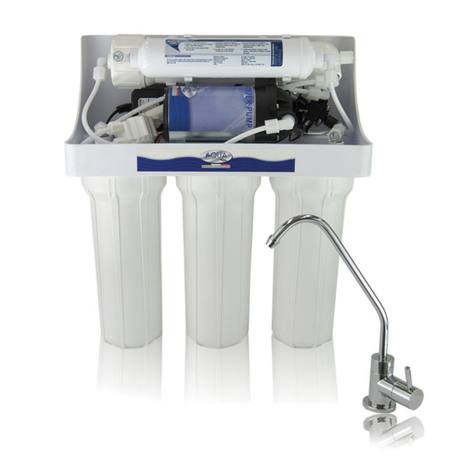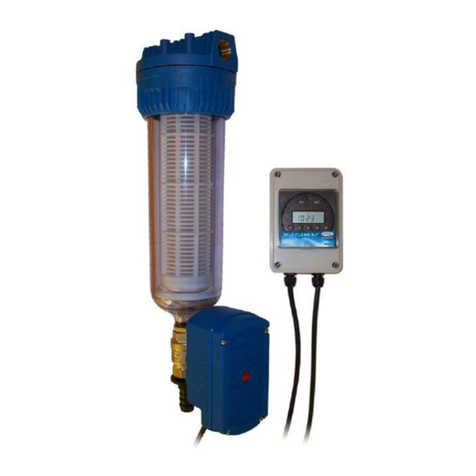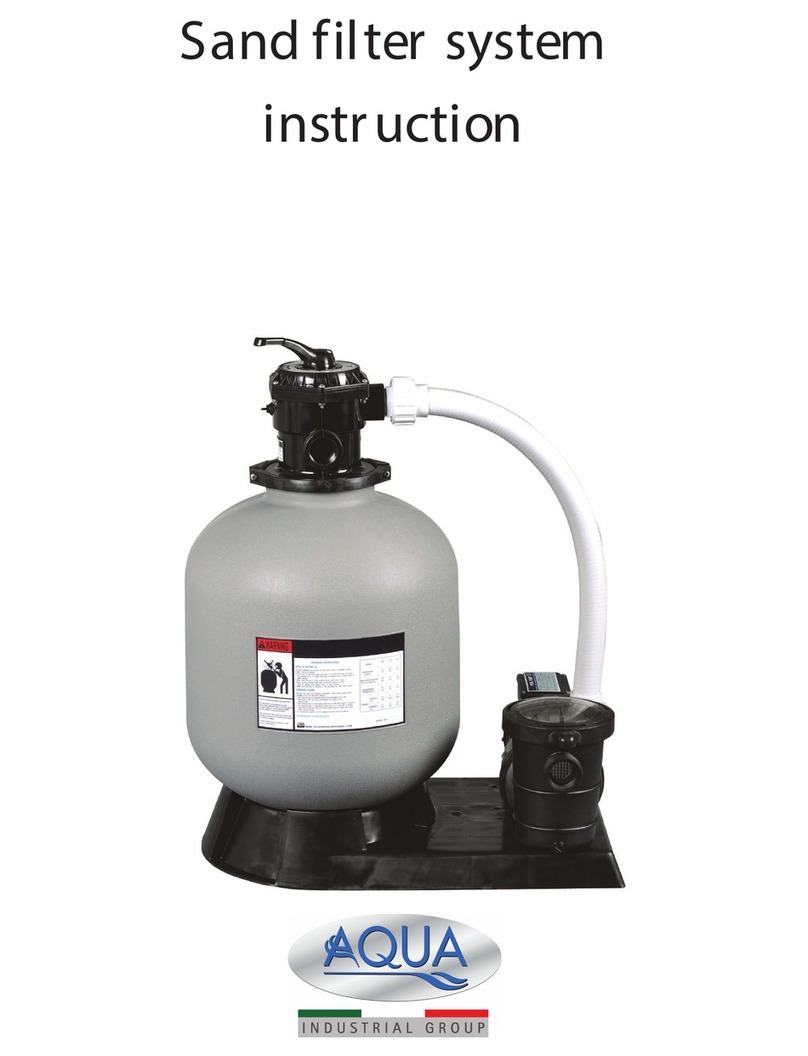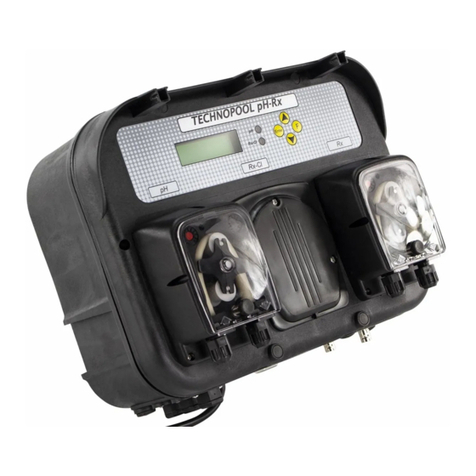
AQUACAL
Polyphosphate salt feeder ENGLISH
L0200080 rev. 1.0 23/10/2020 4/10
1. WARNINGS
This manual is intended to provide all the information necessary for the correct installation of the AQUACAL
product, for its correct use and for maintenance that will allow you to obtain the best results over time.
In this regard, it is extremely important to carefully read the warnings listed below as they provide all the
information necessary for safe installation, use and maintenance.
Upon receipt of the product, ensure its integrity and all its components. In case of anomalies do not
install the product.
This manual must be kept with care for future reference.
Do not leave the appliance exposed to atmospheric agents.
The equipment must be operated by qualified personnel.
It is essential for the product to work correctly to use original spare parts or accessories. The
manufacturer is relieved of all responsibility for any failures due to tampering or the use of non-compliant
spare parts and accessories
The ambient temperature of use must not exceed 50 ° C.
The product must be used on the cold water circuit. It is advisable to treat water with a temperature not
exceeding 25 ° C to avoid abnormal reactions of the polyphosphate salt.
The manufacturer declines all responsibility for any intervention carried out on the equipment by
unqualified personnel.
2. USE
The water commonly distributed in cold water systems contains calcium and magnesium salts which determine
its hardness.
Cold water, once heated, favors a chemical reaction and the subsequent precipitation of magnesium and
calcium carbonate, as well as carbon dioxide. Carbon dioxide favors the corrosion of pipes while calcium
carbonate precipitates deposits of limestone.
Without actually removing the limestone, through the use of the proportional dosers of AQUACAL
polyphosphate salt an adequate anti-scale and anti-corrosion treatment of the water is guaranteed,
guaranteeing a longer life for the pipes, the exchangers, the tanks, etc.
It is mainly used upstream of water systems, boilers, heat exchangers, boilers and washing machines,
ensuring compact dimensions, simple and rapid installation, low product consumption and low maintenance
costs.
The installation of the polyphosphate feeder (or other food-grade chemical conditioning) is foreseen by the UNI-
CTI 8065/89 in articles 6.4.1-6.4.3 and implemented by Italian DPR 59/2009 in art. 4 paragraph 14.
This appliance complies with the following standards:
Plastic material container:
• Italian DM 174 of 06 April 2004 - Concerning the materials and objects that can be used in fixed collection,
treatment, adduction and distribution systems for water intended for human consumption.
• Italian DM 25 of 7 February 2012 - Technical provisions concerning equipment for the treatment of water
intended for human consumption.
Polyphosphate salt:
• UNI EN 1210: 2005 standard - Chemicals used for the treatment of water intended for human consumption.
• Product not subject to the CE marking pursuant to Legislative Decree n. 52 of 02/03/97 and n. 285 of 16/07/98.
• Product classified as non-hazardous pursuant to Legislative Decree 03/14/2003 n. 65 (Directive 1999/45 /
EC) and related Regulation n. 1272/2008 (CLP).



































